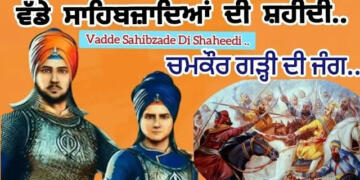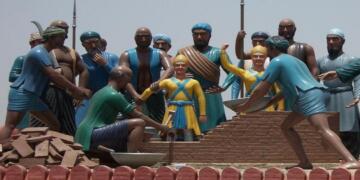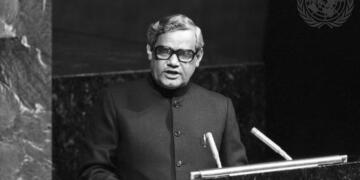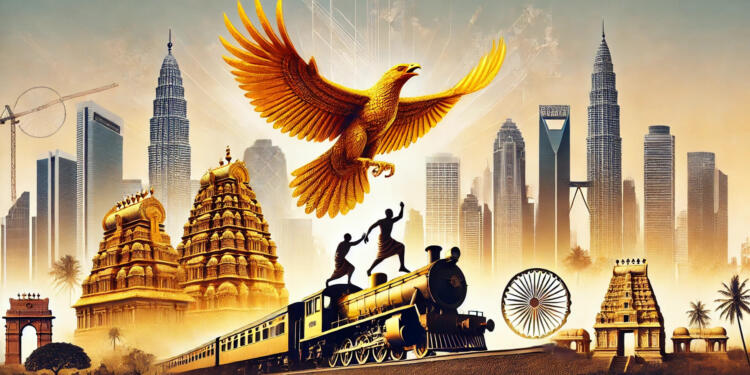The Growth Story:
Day before yesterday, Minister of Railways Mr. Ashwini Vaishnaw took to Twitter to share a recent development regarding the much-awaited Vande Bharat sleeper train.
In the video shared, the fineness of the cabin and the speed of the train were the main cynosures.
In the video, a speedometer and a glass of water were seen placed inside the cabin, and as the train was run through a trial at dawn in the landscapes of India, the speed machine regularly clocked between 178-180 km/h.
It was to be noted how, even at an express speed of 180 kilometers per hour, the cabin did not let any observable level of water to be spilled out.
Vande Bharat (Sleeper) testing at 180 kmph pic.twitter.com/ruVaR3NNOt
— Ashwini Vaishnaw (@AshwiniVaishnaw) January 2, 2025
Now, compared to many other countries like Japan, China, or some in Western Europe like Germany, where the average speed exceeds 250 km/h and even hits a ceiling of 350 km/h when required.
Our 180 km/h Vande Bharat may seem ordinary at best.
But it is still the very best that has been offered to us, and to use that dearly and lastingly until further advancements are made is our own responsibility.
Steady Growth and Transformative Projects :
The present is a time when India is growing and developing. The pace may not be breakneck, but it is steady and determined. The country is laying the foundation for a stronger future.In recent years, transformative infrastructural projects have been implemented. These initiatives directly impact the lives of millions.
Take, for example, the Vande Bharat Trains. This new-age, semi-high-speed rail initiative connects tier-1 and tier-2 cities with unmatched efficiency. Operating across more than 25 routes, these trains come with features like onboard Wi-Fi, comfortable seating, and reduced travel times.
For instance, the journey from Delhi to Varanasi can now be completed in just 8 hours. It’s a transformative experience for travelers.
People are seen enjoying their time traveling in the Vande Bharat. The sleek trains are often photographed, standing at a junction, ready to depart.


In the hilly terrains of Himachal Pradesh, Uttarakhand, and Jammu & Kashmir, ropeway projects are changing the game. These initiatives are rewriting the narrative of accessibility.
The Dharamshala-McLeodGanj line is a great example, along with several others. These ropeways are not just boosting tourism but also easing the lives of residents in remote villages. They significantly reduce travel time in challenging terrains.

The Dharamshala ropeway, set against the mighty Himalayan ranges, is especially charming.
Folks, criticism of the government is valid and, at times, necessary. However, it is equally important to acknowledge advancements.
Moreover a very conscious effort must also be made to advocate for fundamental duties. Individuals must be reminded of their obligation towards others in this country.
Cases in Point:
There are a lot of places that can be looked to improve upon. Efforts like the Swachh Bharat, directly endorsed by the Prime Minister, do speak of a trend of sorts.
Notably, there have been recent instances that attest to the aforementioned observation.
Let us have a look at them!!!
1) The State of the Holy City, Ayodhya:
The re-establishment of the Ram Mandir offered hope, calm, and grace for many people across this country.
Their faith, after all, was monumentalised. A staggering number of 11 crore people visited Ayodhya in 2024.
Naturally expecting heavy traffic, the government redesigned the Ayodhya Dham Railway station at a great cost of Rs 240 crores; a new airport was also made present.
Now, it was up to people to avail themselves of these facilities with grace, but what followed can be best characterised as “messy”.
Months after the country witnessed the grandeur of the Pran Pratishtha in January of 2024, the Ayodhya Dham Junction was seen littered with garbage at some places.


Although the DRM Lucknow cleared the passage, the fact that it happened in the first place is disappointing.
It is one thing to litter when authorities have failed to provide dustbins or similar facilities—though even that should not be normalised and ought to be looked down upon.
Such situations might allow for a certain degree of condoning of this behaviour. However, as confirmed by the authorities working at the junction and locals of the region, the station does not lack any basic amenities.

https://x.com/drm_lko/status/1770865853975970101 (For more details and updates, you can refer to the relevant post and follow the official X (formerly Twitter) account of DRM Lucknow for any related information)
The Roots of Actions :
So, to do this in such an environment, can only be attributed to one of the following reasons:
- Lethargy
- Involuntary
Now, laziness is not a very proud thing to be associated with, and as for being instinctive, it is really context-based.
Virat Kohli instinctively plays balls outside the off-stump. Now, that hasn’t really done wonders for him, going by the ongoing Border Gavaskar Trophy, but the same style of play has made him what he is—a modern-day maestro in the white-ball format.
The point here really is that good instincts come from great virtues, and by committing cringeworthy actions like those we have been talking about, we do not set high standards of class and virtue for others in our society to follow, thus making bad habits an accepted norm—which, might I add, is absolutely the opposite of what our Dharmic Granths talk about.
2) Beer in Hand, Shirts Off: The Iconic Ridge Stands Embarrassed :
Shimla, the beautiful town in Himachal Pradesh named after Goddess Shyamala (a form of Goddess Kali), has recently become an adverse host due to rowdy, savage, and uncouth behaviour from tourists visiting from across the nation.
Reportedly, in a recent occurrence, a bunch of young men were seen dancing with their shirts off at high decibels of music, which can be very subjective in terms of like-dislike or acceptable-tolerable.
Most likely, they were under the serious influence of alcohol.
Videos from Ridge are common now, but dancing with such energy to Sartaj’s slow, soothing music? That’s next level and definitely a topic of research 🔥.
Not feeling cold in Shimla’s freezing weather is impressive, but this talent deserves more than just a hotel stay.… pic.twitter.com/sUaYVgjd3c
— Nikhil saini (@iNikhilsaini) January 3, 2025
The event ostensibly took place around New Year’s, and there is an argument about letting people enjoy that needs to be addressed here.Should the state, or TFI, or anyone care about how an individual celebrates their life? No, absolutely not, but that is substantially the point. How you enjoy, should not matter to anyone you do not offer that influence to. But when your actions impact, affect, and shape the environment of those around you—especially in public spaces—it is a matter of state and societal concern.
It is to be noted that it is not just young groups of men that celebrate New Year’s in Shimla. Many families save months and months to enjoy that much-awaited event.
Families that may have children, that may have elderly parents and grandparents, and it is in society’s domain to speak up at such seemingly deplorable instances.
As of now, there has been no apparent development in regards to those individuals, but we must ensure that these things only happen as an unfortunate anomaly.
The Cultural Significance:
The majority of Indians adhere to the dharma of Sanatan, which is the eternal path guiding individuals toward righteous living. If you’re an outsider to this discussion, you might feel that this very dharma lacks room for civility and decorum. However, that couldn’t be further from the truth. Sanatan, in its essence, ensures and outlines various traits that are essential for leading a fulfilling life.
One key concept in Sanatan dharma is karma. Karma teaches that every action—whether positive or negative—has consequences. This belief connects individual behavior to its effects on others and society at large. It encourages moral discipline and a deep sense of accountability for one’s actions.
Additionally, teachings such as the Yamas and Niyamas from Patanjali’s Yoga Sutras provide guidance. These teachings help individuals lead lives that honor not just the self but the collective. The Yamas, or restraints, include Ahimsa (Non-Violence), Satya (Truthfulness), and Brahmacharya (Moderation). They ensure that an individual’s actions are considerate of others, fostering peaceful and respectful coexistence.
Similarly, the Niyamas, or observances, include Shaucha (Purity) and Santosha (Contentment). These principles encourage internal discipline, which reflects outwardly in one’s behavior.
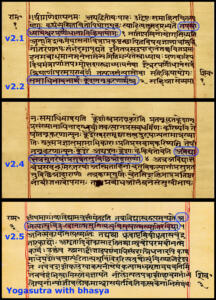
The Teachings of The Bhagavad Gita :
The Garuda Purana and Manusmriti further reinforce these principles, encouraging virtues such as charity, non-violence, truthfulness, and righteousness. These texts guide individuals in practicing generosity, upholding moral integrity, and avoiding harm to others. All of which are foundational to a harmonious society.
In the Bhagavad Gita, Lord Krishna’s teachings focus on Dharma, Sattva (Purity), and self-control. He emphasizes the importance of fulfilling one’s duties without attachment to personal gain. This form of detachment fosters humility, wisdom, and restraint in actions.
Thus, far from neglecting civility and decorum, Sanatan dharma is a comprehensive guide. It encompasses ethical living, societal harmony, and personal development. It lays down a clear framework for individuals to live with integrity. This framework encourages respect for others and a commitment to the greater good.
In the discussion of Fundamental Duties and the undesired lack of them, issues like lower literacy, poverty, and relatively modern sovereignty often come up—and logically so.

On that note, many pedestalise China, but that comparison is somewhat weak. Since its formation in 1949, the country has been under one-party, one-authority rule. A system such as theirs does not rely on citizens to elect the head of state. This gives the government the ability to take harsh and ruthless measures, which may eliminate such issues. However, these measures leave a lasting scar on a large populace—both mentally and physically in some cases.
The Economic Angle :
From an economic viewpoint, we can compare India with countries like Philippines, Nigeria, Bhutan and Laos.
India’s GDP per capita stands at nearly 2.25 Lakhs, which is similar to or slightly higher/lower than the range of these countries.
Notably, the combined population of all these countries is just one and a half times that of Uttar Pradesh. They face their own set of challenges, but due to their smaller size and population, they can theoretically implement frameworks more effectively.
This is not to excuse any disarray on our part, but it is important to recognise that it is only through effort and mutual respect that we will become what we should—A Golden Bird. This can only happen over time. Until then, we follow the process.
The Conclusion :
As India continues to evolve, it’s crucial to stay mindful of both the progress we’ve made and the areas where we still need to grow. We must do our part, embracing our responsibilities with dignity and respect, ensuring that we contribute positively to the country’s future.
Let’s work together to make our nation a better place for all.
We’d love to hear your thoughts—what do you think about India’s development and the challenges it faces? Leave your comments below and don’t forget to share this message with others. Let’s continue the conversation and build a brighter future together.
Each step forward is a testament to the dedication and resilience of this incredible nation. Let’s keep moving forward, hand in hand, with hope and purpose. We are all part of this journey, and together, we can make India shine even brighter.


















